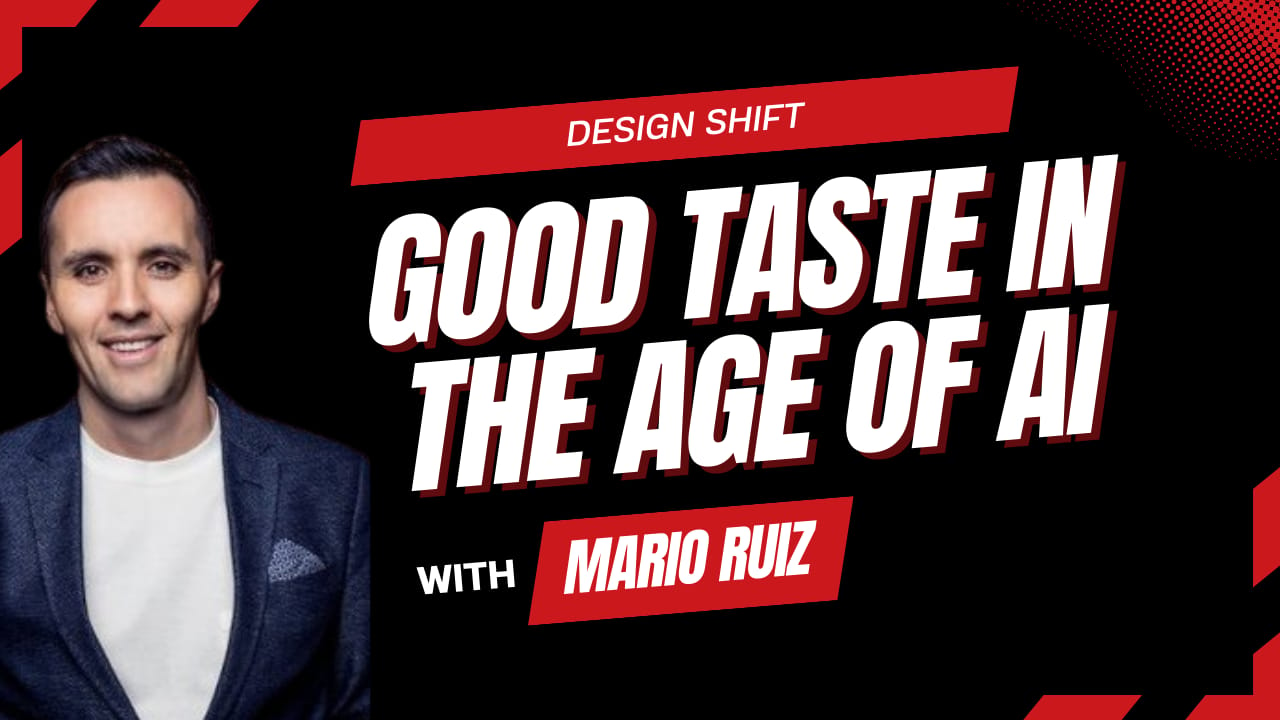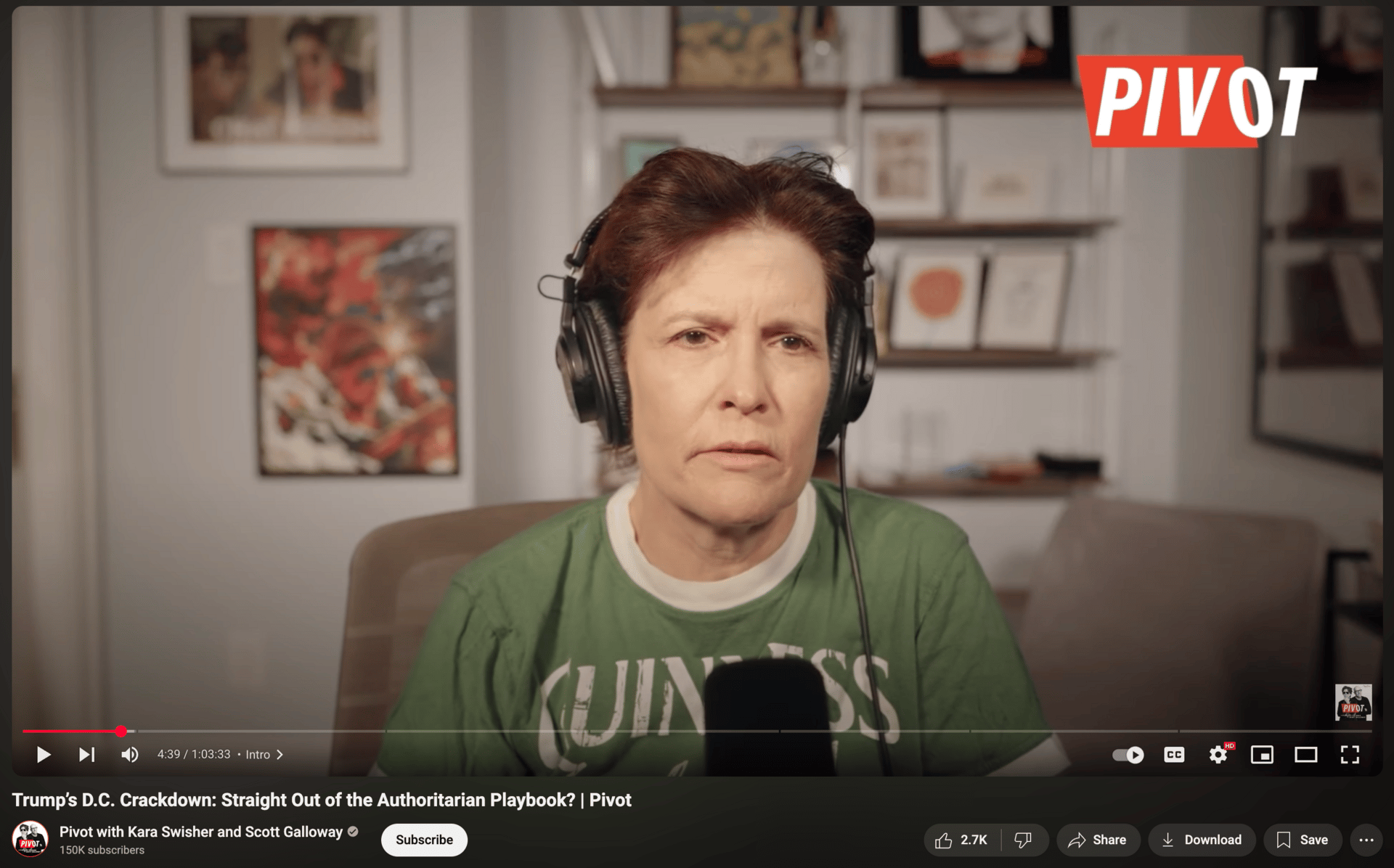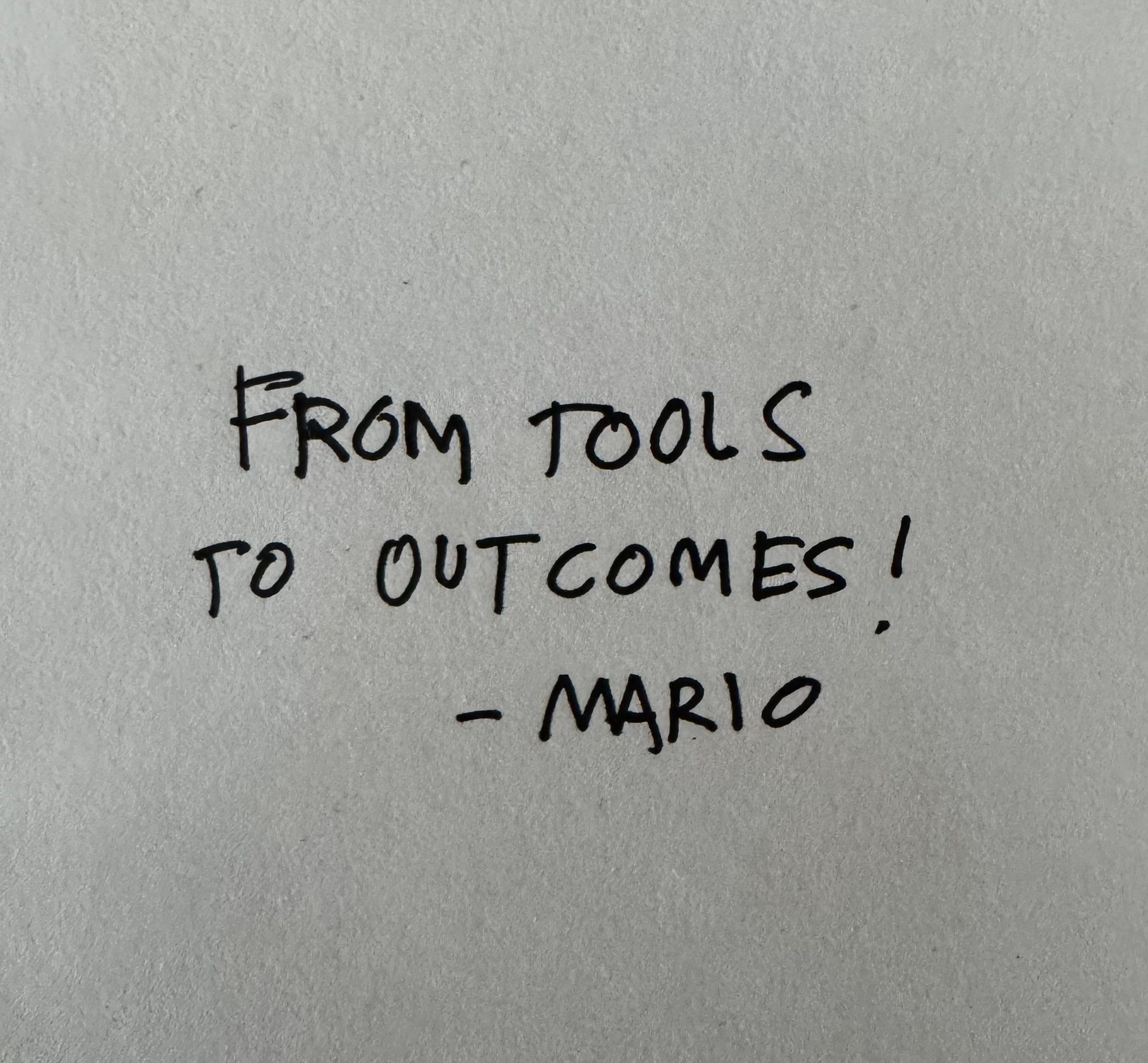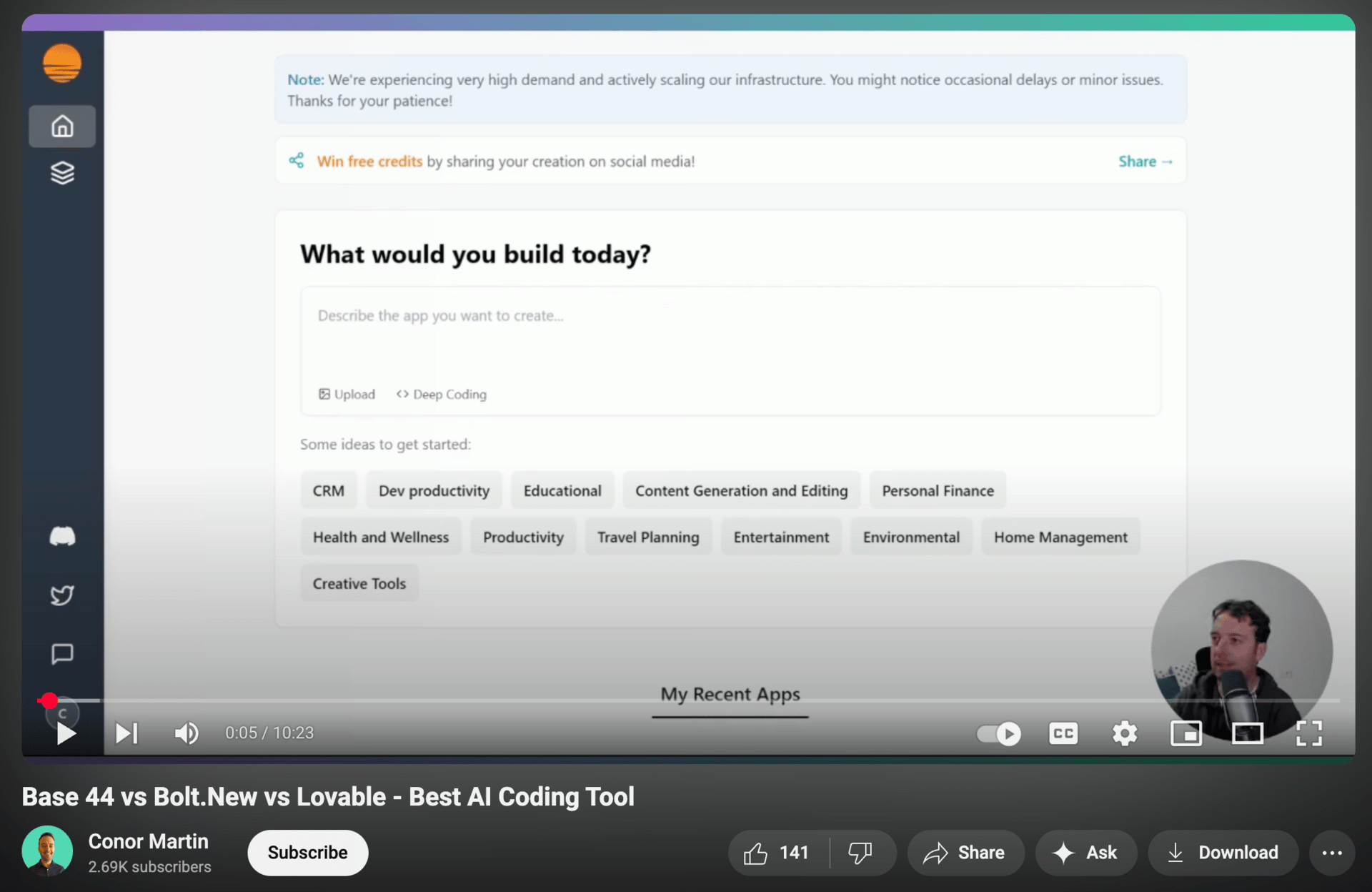
On Kara Swisher’s Pivot podcast this week, she mentioned something Tina Brown (former editor in chief of The New Yorker and founder of The Daily Beast) had told her about reporters: “You can teach people how to write. You can’t teach them how to see.”

Kara Swisher on Pivot, quotes Tina Brown on what separates good writers - the discernment to see what matters in all the noise.
Reporters have always had to cut through the noise to find what human phenomena is interesting enough to write about. Now product builders and creators are hitting a similar challenge. When AI can generate endless options, the skill that matters is knowing which ones are worth moving forward. In the age of AI, when tools can generate so much already, the ability to see what's worth making becomes even more critical.
Dylan Field, CEO of Figma and just off of it’s recent IPO, calls this the “MS-DOS era of AI.” It is still so early. The tools are somewhat unpredictable, but full of potential. Boundaries between design, product, engineering, and research are collapsing. This abundance now creates a new problem: when you can make faster, how do you know what's actually worth making?
The Curation Crisis
AI has flipped the traditional creative bottleneck. We used to struggle with execution and settle for "good enough" because making better was expensive and slow. Now AI can generate dozens of options in minutes, but choosing between them requires something machines can't yet provide: good taste.
This shift is reshaping every creative discipline and blurring the boundaries between roles. AI is "empowering generalist behavior", according to Dylan Field (yay, generalists!). Designers now prototype with code. Product managers can create detailed mockups. Engineers build user interfaces without waiting for design handoffs. Marketing teams analyze data like researchers.
Product is also blurring with design and development and potentially even parts of research. All this is becoming less distinct, and it’s all kind of coming together more.
The barriers that once kept disciplines separate are dissolving. When anyone can generate higher-quality and faster outputs across multiple domains, roles become defined less by what you can personally manually execute and more by what you can guide toward quality. The premium shifts from technical skills to high-judgment and curation of taste.
The companies who win aren't necessarily the ones shipping fastest. They're perhaps the ones with the best discernment.
What Good Taste Actually Means
Taste isn't about personal preference or aesthetic opinion. In a business context, good taste is the ability to consistently recognize quality and make choices that create value and drive user adoption. It can show up in three ways:
You know what works. You know the difference between design that looks good and design that solves a problem. You spot solutions that seem clever but won't scale.
You understand your users. You understand them well enough to choose what they'll actually use over what's technically possible. You know when to follow patterns and when to break them.
You see the system. You see how decisions connect. You choose features that strengthen your product's core value instead of just adding more functionality.
Good taste is what lets you look at ten AI-generated designs and immediately identify the two worth developing further. It's recognizing which features will create lasting value versus which ones just feel novel.
Why This Matters Now
Pre-AI, teams had natural constraints that forced better decisions. Limited resources meant you couldn't pursue every idea. Slow execution meant you had time to think. High costs of change encouraged more careful choices upfront.
AI removes those guardrails. You can now build the wrong thing just as fast as the right thing. Speed amplifies the impact of good and bad judgment equally. Investors are increasingly favoring founders with domain knowledge and operational savvy over raw coding skills because AI tools means anyone can ship working code.
The best AI-native teams are developing new disciplines around rapid evaluation and ruthless prioritization. They generate many options quickly, then quickly apply rigorous filters or tests to identify what's worth scaling. The companies that figure this out first will have enormous advantages, creating hyper-feedback loops to align product-market fit. In the 6 months that Base44, a vibe-coding startup, was a standalone company (with 8 employees), it grew to 250,000 users, hitting 10,000 within its first three weeks and was sold to Wix for $80M cash.
How to Cultivate Better Taste
Study the details. Look at products, experiences, and companies you admire. What specific choices make them work? What would happen if those choices were different? The more you analyze quality, the better you get at recognizing it.
Compare options side by side. When AI generates multiple solutions, resist the urge to go with the first decent option. Put them next to each other and ask: Which one better serves the user? Which one aligns with business goals? Which one you'd be proud to ship?
Test with real users early. Taste isn't just personal judgment, it's judgment validated by real context. Get ideas in front of actual users as quickly as possible to see which ones create genuine value versus which ones just seem clever.
Learn from your mistakes. Track which ideas you thought were strong but failed to gain traction. What signals did you miss? What would you evaluate differently next time?
Work with people who have different taste. Your blind spots are someone else's strengths. Build teams and networks with diverse perspectives who can challenge your assumptions and help you see things you'd miss alone.
The Stakes Are Higher
Dylan Field's MS-DOS metaphor is telling. We're in the early, messy stage where anything feels possible. But historically, periods of technological abundance get followed by consolidation around what actually works.
Five years from now, the winners won't be the teams that shipped the most AI-generated content. They'll be the ones who used AI as a tool to create experiences and outcomes that people actually wanted, used, and loved.
In an age when anyone can make anything, taste becomes the ultimate competitive advantage. The question isn't whether you can build it. It's whether you should.
Subscribe to Design Shift for more conversations that help creative professionals grow into strategic leaders!
What did you think of this week's issue?
Your Memory: Now instantly searchable
Limitless is the wearable AI that instantly captures, transcribes, and remembers every meeting, conversation, and brilliant thought you have - securely, seamlessly, and privately. Transform how you work, live and never miss a beat again.


